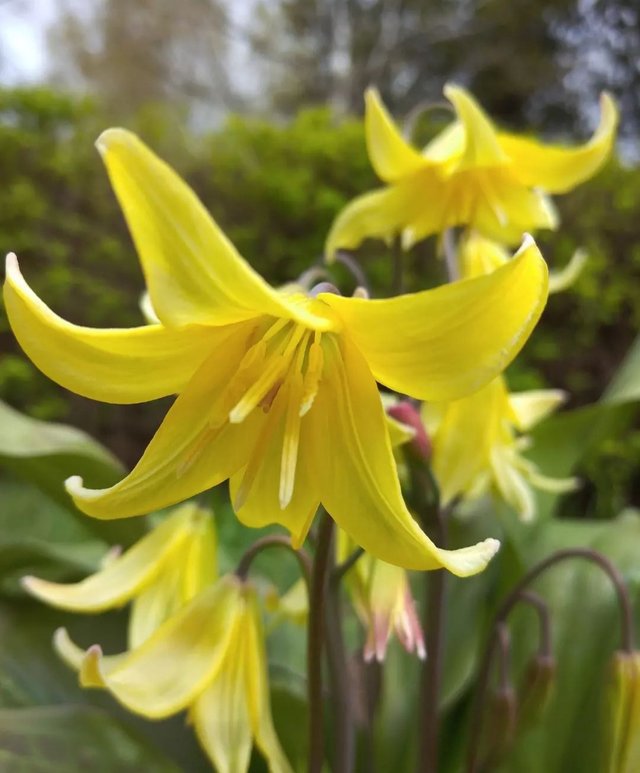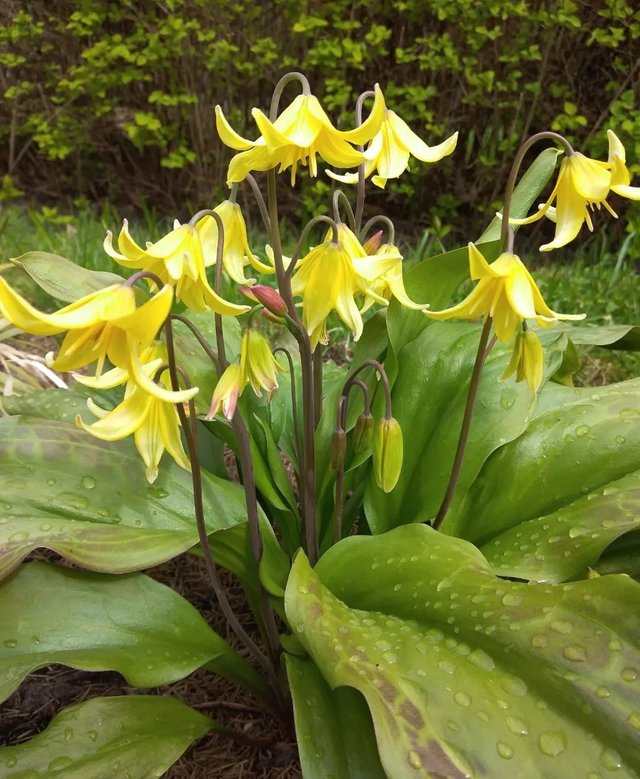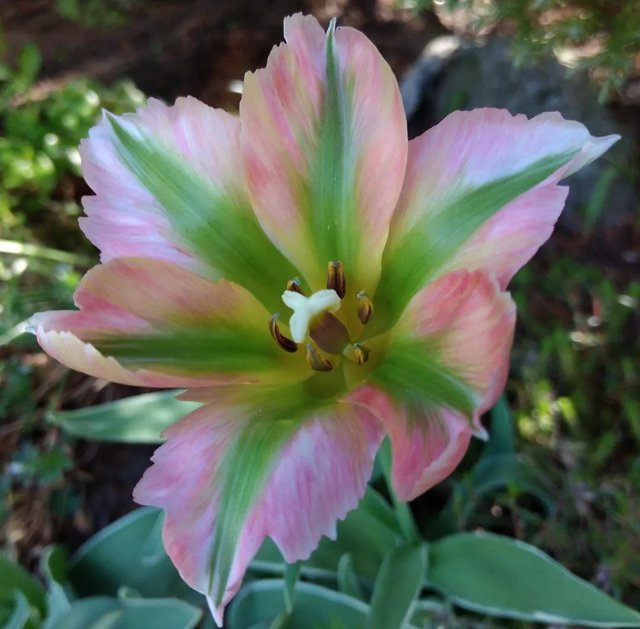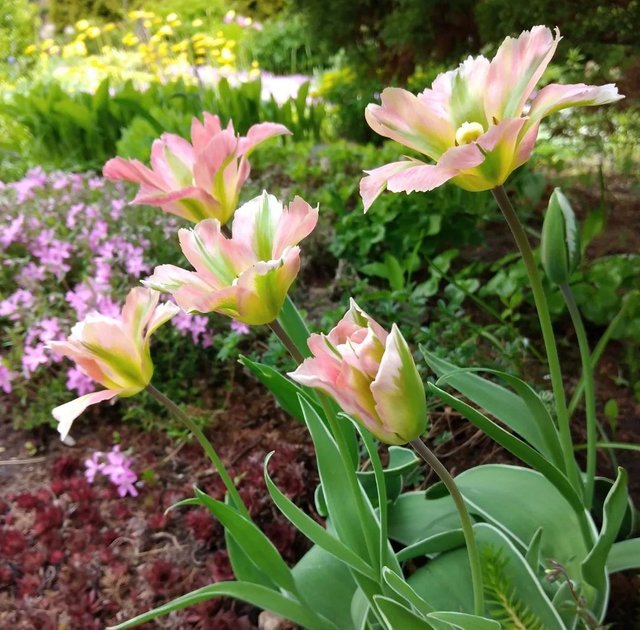



In the enchanting realm of botanical wonders, the Erythronium tuolumnense stands as a captivating masterpiece, adorning landscapes with its delicate yet vibrant presence.Erythronium tuolumnense is renowned for its gracefully nodding, pendant-like flowers that emerge from slender stems, showcasing a mesmerizing blend of colors. The petals, often varying from creamy whites to pale pinks, form a distinct "turban" shape, while the basal leaves present a verdant carpet beneath the blooming spectacle.
Native to the western United States, particularly in the Sierra Nevada region, the Tuolumne Fawn Lily finds its natural habitat in woodland areas and meadows. It thrives in well-drained soils, where it can spread its rhizomatous roots, creating colonies that transform the forest floor into a picturesque tapestry during the spring season.The bloom time of E. tuolumnense typically occurs in early to mid-spring, making it a herald of the changing seasons. Each flower, with its unique blend of colors and subtle fragrance, beckons pollinators like bees and butterflies, contributing to the intricate dance of ecological relationships.
Beyond its ecological role, the Tuolumne Fawn Lily holds cultural significance among indigenous communities. Some Native American tribes have historical uses for different parts of the plant, ranging from medicinal purposes to ceremonial practices, reflecting the deep connection between nature and human culture.Despite its enchanting allure, E. tuolumnense faces conservation challenges due to habitat loss and disturbance. Efforts to preserve and restore its native habitats are crucial to ensure the continued existence of this botanical gem.
For avid gardeners and enthusiasts, cultivating Erythronium tuolumnense in a woodland garden or shaded area can bring forth a touch of wilderness. Its adaptability to various soil types and preference for partial shade make it an accessible yet rewarding addition to horticultural endeavors.The Tuolumne Fawn Lily, with its botanical grace and ecological role, stands as a testament to the intricate beauty woven into the fabric of nature. As we delve into the details of E. tuolumnense, we unravel not only its floral splendor but also its role in the larger symphony of the natural world.
.gif)